
XML Protocol Abstract Model
Draft (2nd February 2001)
- This version:
- @@@
- Latest version:
- @@@
- Contributors: (alphabetical)
- Mark Baker, Sun Microsystems, (mark.baker@canada.sun.com)
- Martin Gudgin, DevelopMentor, (marting@develop.com)
- Oisin Hurley, Iona, (ohurley@iona.com)
- John Ibbotson, IBM Corporation, (john_ibbotson@uk.ibm.com)
- Scott Isaacson, Novell Inc. (SISAACSON@novell.com)
- Yves Lafon, W3C, (ylafon@w3.org)
- Jean-Jacques Moreau, Canon, (moreau@crf.canon.fr)
- Henrik Frystk Nielsen, Microsoft Corporation, (frystyk@microsoft.com)
- Krishna Sankar, Cisco Systems, (ksankar@cisco.com)
- Nick Smilonich, Unisys, (nick.smilonich@unisys.com)
- Lynne Thompson, Unisys, (Lynne.Thompson@unisys.com)
- Stuart Williams, Hewlett-Packard Company, (skw@hplb.hpl.hp.com)
Copyright
©2000 W3C® (MIT, INRIA,
Keio), All Rights Reserved. W3C liability,
trademark,
document
use and software
licensing rules apply.
This document is a strawman proposal for an abstract model for XP.
The challenge of crafting a protocol specification is to create a description
of behaviour that is not tied to any particular approach to implementation.
There is a need to abstract away from some the messy implementation details of
buffer management, data representation and specific APIs. However, in order to
describe the behaviour of a protocol one has to establish a set of (useful)
concepts that can be used in that description. An abstract model is one way to
establish a consistent set of concepts. An abstract model is a tool for the
description of complex behaviour – it is not a template for an implementation...
although it should not stray so far away from reality that it is impossible to
recognise how the required behaviours would be implemented.
This document is a strawman proposal for an abstract model for XP. It is by
no means complete or polished and at this stage the authors just like to get
some sense as to whether there is an consensus that such a model is a useful
contribution to the XP effort.
This document is not a W3C Technical Report. It is to be considered work in
progress and does not imply endorsement by the W3C membership nor by the XML
Protocol WG. It is currently under review and discussion by the XML Protocol
WG.
Discussion of this document will take place on the public <xml-dist-app@w3.org> mailing list (Archives) as
indicated by the email communiation
rules provided in the WG charter.
Issues
- Intermediaries: XP processors above as clients of XP layer or integral to
XP layer.
- If integral to layer, path model and operation semantics have to extend
across intermediaries.
- If clients, then path model and operation semantics across intermediaries
can be deferred for further study.
- Best Effort, Single Hop, Unordered and possibly with Duplicates, one-way
and two-way request/response operations... Is that it for the core?
- Do we need BOTH one-way and request/response as separate operations. I
think so, if we want the messaging layer to look after request/response
correlation. The use of a separate operation serves as a trigger to the
binding to include headers to do the correlation if the underlying protocol
has no intrinsic mechanism of its own that enable correlation.
@@@
An abstract model is a useful means to develop a description of a system. It
abstracts away from practical details such as specific API definitions, data
representation, and buffer management. It provides a way to give a precise
description of the externally visible behaviour without being prescriptive of
implementation architecture.
The diagram below exposes the various elements in an XP system:
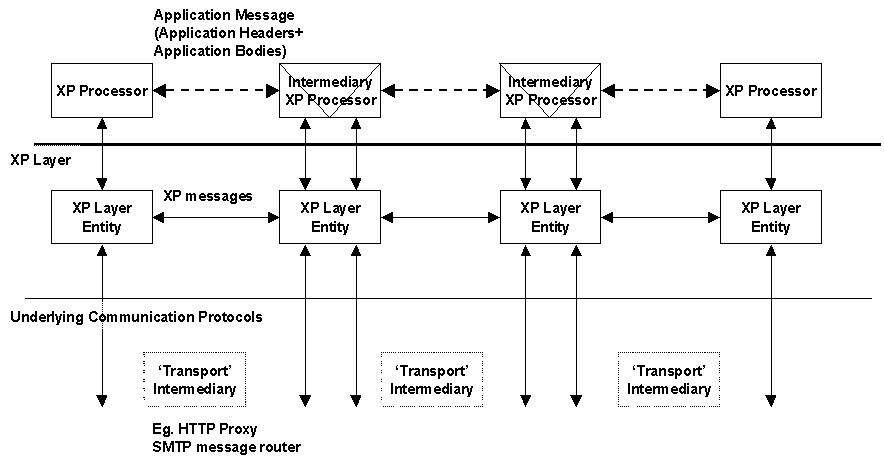
Figure 2.1 XP System Architecture
XP processor: A client/user of the messaging services provided by the
XP Layer. XP Processors can act in the role of sending/initiating XP
processor, receiving/responding XP processor, or in the role of an Intermediary
XP processor.
Intermediary XP processor: An XP processor that terminates one XP
messaging operation and initiates one or more subsequent XP messaging operations
as a direct consequence of the first operation. The messages forwarded by
intermediaries are derived from the messages they receive. The transformations
intermediaries perform on the messages that pass through them are defined by the
XP modules they support. For example, an explicit 'XP Message Routing Module'
may define syntactic structures and processing rules for those structures to
facilitate the source routing of messages through a predetermined chain of
intermediaries; an 'XP authentication module' might provide syntactic structures
and processing rules for the inclusion and checking of digital certificates and
signatures - such a module would be expected to leverage the work of other
groups (eg XMLDSIG).
This draft positions intermediaries as XP Processors (or
clients of the XP Layer) rather than as entities that 'live' within the XP
layer. Some are not comfortable with this positioning [see http://lists.w3.org/Archives/Public/xml-dist-app/2001Feb/0007.html]
XP layer entity: XP layer entities are the entities that provide the
XP messaging service to XP processors that use the XP layer. XP layer entities are
responsible for enforcing the XP rules of procedure that govern the exchange of
XP messages and for the binding of the
XP layer to underlying communications protocols.
Application Message: An application message is application specific
component of an XP message. It consists of application header and body parts
that are opaque to the XP messaging layer in the sense that their structure and
semantics are unknown to the XP messaging layer.
XP Message: An XP message is the unit of communication between peer XP
layer entities. In
the abstract it is a structure that represents the contents of the XP envelope
and plus any Application Message components (whether carried within the envelope or externally
in-line'd within the binding specific 'message wrapper' cf ebXML and SOAP with
attachments). An XP message may differ from an application message through the
inclusion, processing and removal, of XP message headers by XP layer entities to
facilitate the operation of the XP protocol - for example, operation IDs headers
may be added by layer entities to correlate request/response pairs, sequence
numbers may be added to support duplicate prior to delivery from a layer entity
to an XP processor.
In degenerate form, it may be the case that an XP Message
and an Application message are semantically and even syntactically equivalent,
however we will not know this until we have completed the design process.
XP Service Access Point is a conceptual point at which XP services are
accessible. The address of an XP service access point is denoted by a URI. Since
XP may be used asymmetrically, the address of the sending/initiating XP
client may be unavailable, hence the initiating/sending entity may not be explicitly
addressable by a remote or responding XP client.
I have tried, and I think largely succeeded to get a much
better alignment between the terms in the glossary of the requirements document
and the terms used here. I find the glossary narrative and diagrams for the
terms "XP processor", "XP Sender" and "XP
Receiver" inconsitent see [http://lists.w3.org/Archives/Public/xml-dist-app/2001Feb/0004.html].
I have taken and used "XP Processor" to be a user of the XP
layer that processes the application semantics of delivered message,
equivalent to an "XP Client". I have taken "XP Sender" and
"XP Receiver" to be providers of message sending and receiving
services to "XP Processors" which jointly correspond "XP layer
entity" a term that I have retained...
This has caused me to introduce a distinction between what an application (or XP
Processor) exchanges with its peer and what the provider of the XP messaging
service exchanges with its peer. I believe that this an important distinction
not well captured with the simple notion of an "XP message" . I have
introduced the term "application message" which is intended to
encapsulate application headers and bodies. There is some discussion as to
whether header/body distinction is meaningful. I'd certainly be in favour of the
notion of multiple application body parts all of which might be thought of as XP
blocks. The header/body distinction then becomes a distinction between what gets
generated/processed by an XP Layer Entity and what gets generated/processed by
the application/XP processor. Such a view returns us to a comfortable and
conventional view of header/body distinction.
Alternates for Application Message might be Application Payload, Body(ies),
Payload... other suggestions?
This section focuses on the definition of the abstract messaging services provided at
the XP layer interface. Two operations are modelled: a one-way XML
datagram operation (XP_UnitData); and a two-way XML request/response operation (XP_Data).
Both are assumed to be best effort and capable of re-ordering and
duplicating messages.
We may be able to relax these, particularly message
duplication - the mechanisms by which this may occur depend heavily on the
underlying protocols and on any mechanisms introduced into the XP layer through
modules intended to improved the the reliabliity of delivery.
-
XP_Data – A two-way request/response
message exchange model by
four primitives (or events) corresponding to the transmission and
reception of the request and response messages.
-
XP_UnitData – A
one-way datagram service modelled by three primitives (or events) corresponding to the start and end of
transmission (from the senders point-of-view) and the reception of an XP
message
A response message may arise, however that is a matter of
application semantics, to be dealt with by the
XP Processor (and above) through the future invocation of XP_UnitData and/or XP_Data
operations in the reverse direction.
Replaced uni-directional
and bi-directional with one-way and two-way in response to http://lists.w3.org/Archives/Public/xml-dist-app/2001Jan/0090.html
item #3
The XP Messaging Service is a
single hop service, so in-general the delivery semantics of the service apply
only to the direct exchanged of messages between peer XP processors. Where an XP
processor acts as an XP Intermediary, it may extend and fork the message
delivery path over multiple hops. However, delivery semantics in relation to
messages delivered through an chain of intermediaries and the semantics in
relation to messages that have been partially processed through a chain of
intermediaries remain a topic for further study as our thinking on Intermediary
XP processors matures. Sec
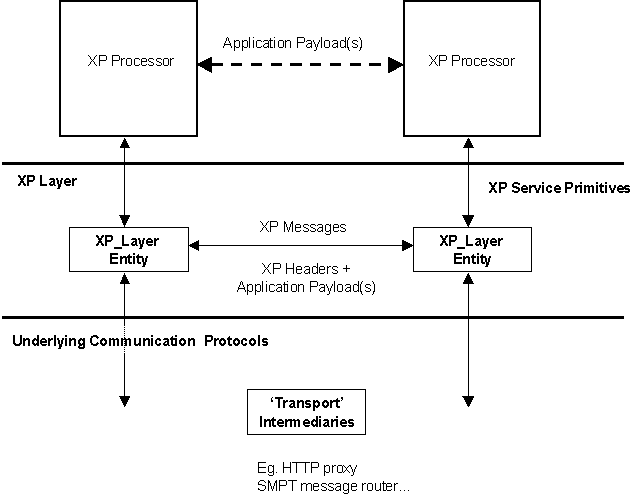
Figure 3.1
Single Hop XP Messaging Service
Operation primitives are abstract events that cross the boundaries between
protocol layers. They are a descriptive device that allow us to abstract away
from practical implementation details such as buffer management and specific
APIs and invocation mechanisms such as upcalls (callbacks), downcalls, queing
and polling mechanisms.
It is important to note that operation primitives are an abstraction. From a
descriptive point-of-view they become events and actions that drive and are
driven by the procedural rules of the protocol.
.request
Used by initiating or sending XP processors to start an operation. Typically used to start the sending of
a message.
.indication
Used at the receiving or responding XP Processor to indicate the arrival of a
message on its 'outward' journey.
.response
In two-way services, used by the responding XP Processor to
return a response or fault toward the initiating XP Processor.
.confirm
Used at the initiating XP Processor to indicate the completion
of an operation started by the corresponding .request
primitive.
In the case of a two-way operation (XP_Data) it may also carry a
response or fault message on its 'return' journey toward the initiating XP
Processor .
Ray Dennenberg [seehttp://lists.w3.org/Archives/Member/w3c-xml-protocol-wg/2001Jan/0100.html]
suggested renaming .request and .indication primitives as .send and .receive for
use with the UnitData operation. At present I have not done this. I did not want
to end up with 6 types of primitives instead of 4. If the group would prefer
this change, I'd be inclined to split this subsection into two and embedded each
half into the description of the relevant operation. ie. Figure 3.2 and the
description of .request, .indication, .response and .confirm would move to be
with the rest of the description of XP_DATA, and Figure 3.3 and .send, .receive
and .confirm (again) would move to be with the rest of the description of
XP_UnitData.
Alternatively, .request
and .indication could be relabelled as .send and .receive for both Data and
UnitData operations - however, .response and .confirm would probably need to be
relabelled to feel comfortable with .send and .receive. Any suggestions?
These four primitives are used in two common
patterns to model
the behaviour of two-way request/response operations and one way datagram
operations as illustrated in the diagrams below.
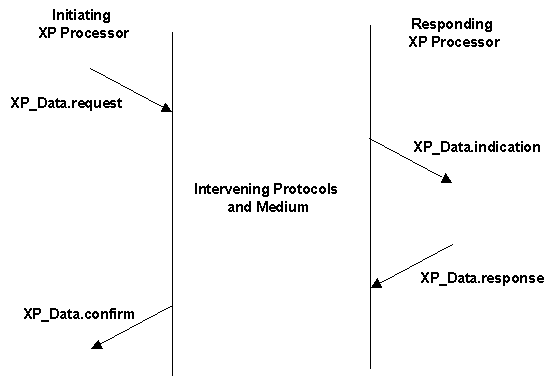
Figure 3.2 XP_Data Operation: Two-way request/response
operation
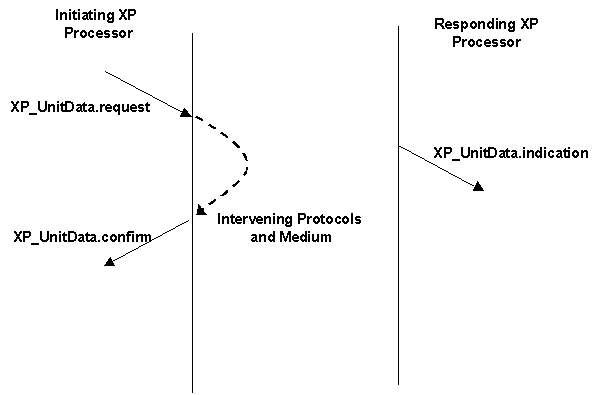
Figure 3.3 XP_UnitData Operation: One-way datagram.
From the initiators point-of-view both of types of operation start with the
invocation of a .request primitive and terminate with the invocation of a
.confirm primitive.
A subtle difference is that in the two-way case the .confirm primitive
arises only after a .indication has been raised at the responding client,
whereas in the one-way case it merely indicates that the operation is complete
from the initiating end's point-of-view. In the one-way case a (silent) failure
may prevent a message from being delivered as an .indication to the
responding client, even though a .confirm is delivered back to the
initiating client.
XP_Data is an unreliable two-way request/response operation which is
modelled by four primitives. Each primitive models a transmission or
reception event at interface between an XP layer entity and an XP
Processor:
XP_Data.request( To, [{ModuleList}],
Body,
[{AttachmentList}],[BindingContext]);
XP_Data.indication( To,
From, [{ModuleList}], Body, [{AttachmentList},
[BindingContext]]);
XP_Data.response(
[{ModuleList}], [Body|FaultBody], [{AttachmentList}],
[BindingContext]]);
XP_Data.confirm( From, [{ModuleList}],
[Body|FaultBody], Status,
[{AttachmentList}], [BindingContext]);
All parameters are
detailed in Section 3.4
I have removed path
related parameters from these primitives, consistent with the positioning of
intermediaries as XP Processors above the layer.
The operation is unreliable since it can fail silently through the loss of
messages in transit. Immediate failures that prevent the invocation of a
primitive are reported as the result of the attempted invocation.
An XP processor may engage in multiple concurrent operations with the same or
different recipients/paths. These concurrent operations are independent and the
order in which they are processed by the recipient may be
different from the order in which they are invoked or complete at the initiator.
Failures that arise during message processing at XP intermediaries or at the
intended recipient result in the inclusion of a FaultBody rather than a
ResponseBody in the .response and .confirm primitives.
This operation may be implemented over HTTP, HTTPS, SSL/TCP, TCP and SMTP.
3.3. XP_UnitData Operation
XP_UnitData is an unreliable one-way datagram operation which is
modelled by two service primitives that model the transmission and reception of
request message as follows:
XP_UnitData.request(To,
[{ModuleList}], Body, [{AttachmentList}], [BindingContext]);
XP_UnitData.indication(To,
From, [{ModuleList}], Body, [{AttachmentList]}, [BindingContext]);
XP_UnitData.confirm(
[From], Status, [BindingContext]);
All parameters are
detailed in Section 3.4
I have removed path
related parameters from these primitives, consistent with the positioning of
intermediaries as XP Processors above the layer.
The operation is unreliable since it can fail silently through the loss of
messages in transit.
In general there are no ordering guarantees with respect to the delivery of
messages. Transport intermediaries and recipient processing may re-order messages. Thus, the
order in which concurrent XP_UnitData operations complete is independent of the
order in which they were initiated. In applications where sequencing is
important an optional XP module may be used to establish the original ordering
within XP layer clients.
The one-way and unreliable nature of the interaction mean that
failures during recipient XP processing should result in a message sent in a
one-way message carrying a FaultBody in the reverse direction. It is also
important that a failure to deliver a fault message does not give rise to
further fault messages.
This service may be implemented over HTTP, HTTPS, SSL/TCP, TCP, SMTP and
UDP.
This section describes the (abstract) parameters that are used in the XP_Data
and XP_Unitdata operation primitives. These parameters are abstract in the sense that no attempt is made
to relate them to any concrete representation of values. They
would typically relate to the parameters of an API (if the an API were closely
modelled on this service definition), however, they are given only a narrative
description here.
|
To |
An identifier that denotes the XP Processor that a message is
being sent to. The sense of this parameter follows the direction of flow.
In .indication this parameter denotes the XP Processor to which the
message was sent in the corresponding .request primitive. This
enables the identity of the originally intended recipient to be preserved
despite possible redirections imposed by underlying protocols.
.response primitives do not carry a To parameter because the
intended recipient of the response is implicitly the initiating XP
client. |
|
From |
An identifier that denotes the sending XP Processor in .indication
and .confirm primitives.
In .indication primitives this parameter makes the identity of
the sending/initiating XP Processor available to the receiving/responding XP
Processor.
[Intermediaries may
obscure this or we may require that they don't... discuss!]
In the XP_Data.confirm primitive this parameter conveys the
identity of the receiving/responding XP Processor after any redirections that may have
been imposed by underlying protocols.
[Again possibly obscured
by intermediaries...]
In the XP_UnitData.confirm primitive, this parameter conveys the
identity of the XP Processor to which an XP message was sent after any
redirections imposed by underlying protocols. NB. Further redirections may
occur that cannot be reported. |
|
OrigPath
|
A list of identifiers that denote, in order, the path of intermediaries
that the originating XP client wishes to process a message prior to
delivery to the intended recipient.
[We may wish to support the concepts of both strict and
loose sourcerouting of XP messages as well as implicit XP message
routing. The full route taken by a message may be different from that
requested and not fully known to either initiating or responding
clients.]
The ordering of intermediaries and the ordering of module blocks in
ModuleList may be semantically significant.
[Depending on actual design it may not be possible to
preserve the value of this parameter from .request through to
.indication.]
|
|
ActualPath
|
A list of identifiers that denote the actual path of intermediaries
used between initiating and recipient XP clients. This may differ for
OrigPath due to redirections imposed by underlying protocols.
[The actual path taken by a message may only be partially
reported and may be entirely inaccesible.]
The ordering of intermediaries and the ordering of module blocks in
ModuleList may be semantically significant.
|
|
ModuleList |
An optional list of XP module blocks for inclusion in (.request
and .response) and included in (.indication and
.confirm) XP messages.
The ordering of module blocks and the ordering of intermediaries in
OrigPath may be semantically significant. |
|
Body |
This is the classic application payload data that is passed between XP
Processors through the operation of the protocol.
This data may be processed and extended by XP intermediary processors
which may guided in their processing by the presence of XP modules in the
ModuleList.
|
|
AttachmentList |
This is a list of attachments that are required to accompany the
message. These attachments are regarded as opaque byte arrays whose
content is preserved between neighbouring XP processors. XP
Intermediaries may process, add or delete attachments.
Where the underlying protocol(s) natively support attachments these
native facilities will be used in accordance with the appropriate binding
specification. Where there is no native support for attachments in the
underlying protocol, an XML friendly character based transformation will
be applied to carry the attachments within the XP envelope.
From the point-of-view of abstract service definition the actual
mechanism used to transfer attachments is immaterial, however particular
bindings may employ more efficient mechanisms than others.
[NB. This places an obligation on XP protocol binding
specifications to specify how attachments are to be carried.] |
|
BindingContext |
This parameter references an abstract structure that carries
information pertinent to the underlying protocol binding(s). For example
it may carry certificates, ids and passwords to be used by the
sending/initiating XP Processor to authenticate itself and/or to establish a secure channel. At
the responding XP Processor it may carry the authenticated id
of the principal on whose behalf the operation is being conducted.
If the information present in the BindingContext is inadequate for the
execution of a given service primitive the invocation of that primitive
will fail with a result that indicates why progress was not possible.
BindingContext is optional and if not supplied the local default
binding will be used. In the case of multiple bindings being available,
inbound BindingContext indicates how an inbound message was received and
outbound BindingContext constrains the choice of binding used for a given
operation.
[NB This concept places another obligation on XP
protocol binding specifications in that they must enumerate what binding
specific information they require in an outbound BindingContext and what
binding specific information they provide in inbound
BindingContexts.]
It may be possible to aggregate BindingContext fields across multiple
protocol bindings – eg. The usage of Realm, UserId, Password, Certificate
values may not be restricted to a single protocol binding, they may be
broadly applicable attributes of the principal.] |
|
FaultBody |
This carries an alternate response body in the event of an XP
processing failure either at the responding XP Processor along the path. In the event of such a failure a FaultBody is
returned instead of a Body. |
|
Status |
This parmeter is present in .confirm primitives to indicate whether the
operation has completed normally or not. Possible values for Status are:
MessageSent, MessageDelivered, MessageLost... (others as the design
proceeds). Abnormal completion arises when
the operation of an underlying protocol fails. Eg. an attempt to establish
a secure channel at a lower layer may suffer an authentication failure. In
such circumstances further information about the failure should be
accessible in the BindingContext. |
[The service primitives and particularly their parameters are
likely to evolve. In an abstract sense with the exeception of BindingContext and
Status, the remaining parameters are an abstraction of the message exchanged
between XP clients. With a suitable definition of an XP message abstraction most
of these parameters could be collapsed into fields within that abstraction.
Particular bindings would be free to 'lift' fields (like To) from an outbound
message and re-express them in lower-level headers or indeed leave them in place
and still use them for the formation of lower-layer headers. Likewise on inbound
messages, bindings could synthesise message fields from lower-layer headers if
they are not present in within the XML payload. An advantage of expressing
attachments as a separate parameter is that their inclusion within the XML
envelope or another wrapper (eg. MIME multipart) is deferred to the
binding...there will be issues related to the formation of a manifest and
internal references (URIs) for and to attachments].
There is discussion of how useful the distinction between header
and body is [see http://lists.w3.org/Archives/Public/xml-dist-app/2001Jan/0110.html]
Application Header and Bodies may become absorbed within a single construct.
This document will evolve to accomodate whatever final view is taken.
The has been considerable discussion of the handling of binary
attachments. There are multiple views about whether XP should be capable of
carrying multiple (application) attachments or payloads. The view taken here is
that the XP messaging service will intrinsically be able to handle multiple
arbitrary payloads and one such payload may be marked out as special - ie a body
to which things are attached - or not, ie. just a collection of related
payloads. Again this section will evolve with this debade.
An intermediary XP Processor is an XP processor that processes XP messages and
forwards derived messages on to further XP Processors. The message path through intermediaries
may be allowed to fork (cf. SMTP). In the
case of two-way operation it is then the responsibility of the intermediary that
introduced the fork to coordinate the formation of the response that is returned
toward the initiating XP processor.
The processing behaviour of an intermediary XP processor is similar to that
of an ordinary XP processor. Inbound messages (.indication or
.confirm primitives) are subject to XP Processing and XP Module
Processing. Depending on the function of the intermediary suitably derived XP
message body and modulelist parameters are formed and a revised message
sent on the next leg of its journey. For the two way XP_DATA service, there are
two possible interaction patterns plus hybrid derivatives.
·
Fully Interlocked: The .request propagates fully through to the
responding client which generates a response that propagates fully back to the
initiating client
·
Hop-by-Hop: where each intermediary responds locally and
immediately to its neighbour. Note that with this pattern the response received
by the initiating client does not originate from the responding client.
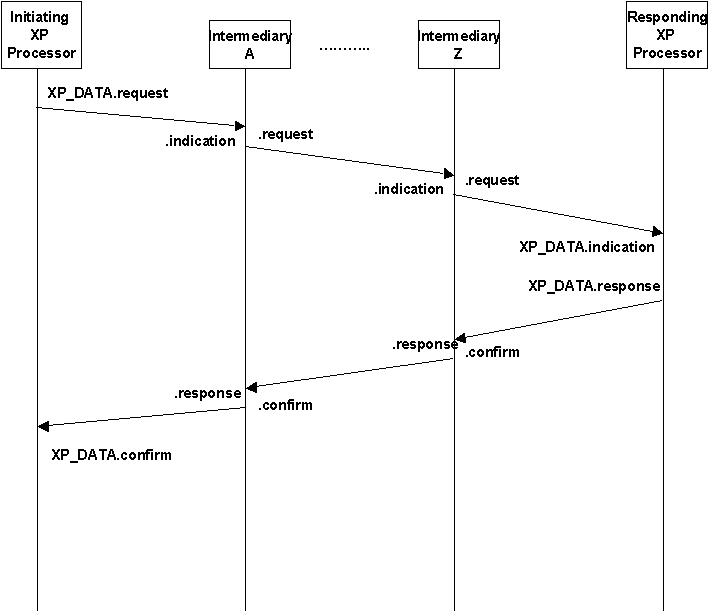
Figure 4.1 Interlocked XP_DATA operation through Intermediaries
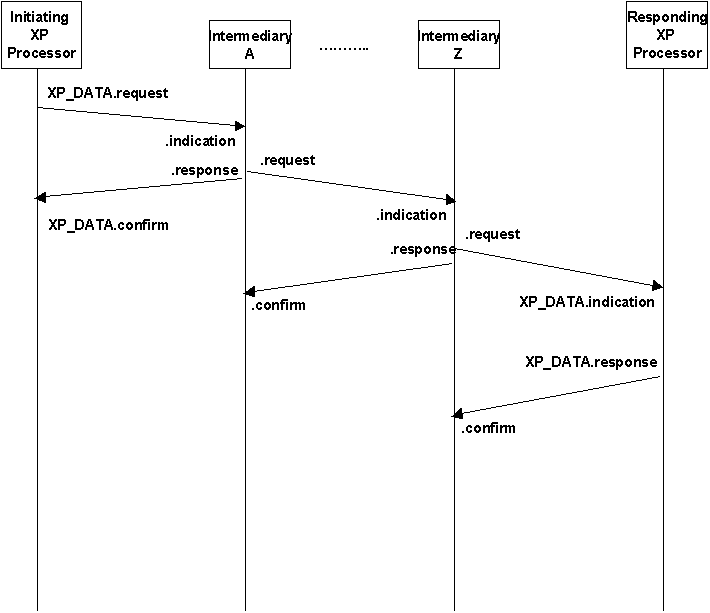
Figure 4.2 Hop-by-Hop
XP_DATA operation through Intermediaries
[Personally, I don't think this hop-by-hop pattern really works.
It's here to illustrate the difference and someone else may be able to
articulate circimstances where it would be of value... I am at a loss!]
The XP_UNITDATA service operating through intermediaries follows a similar
pattern. However, the .confirm primitives arise through the operation of
the underlying protocols between neighbouring XP layer entities.
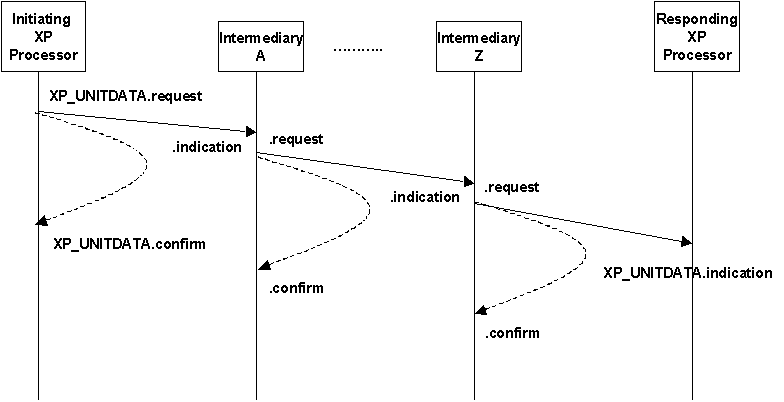
Figure 5.2 XP_UNITDATA operation through Intermediaries
5. XP Message Processing and Extensibility (XP
Modules)
Broadly there are two types of XP Modules. Those that encapsulate some
application semantic, which are processed by XP processors above the XP
messaging service layer, and those that enhance the delivery properties (QoS?)
of the XP messaging service itself, eg. through the addition of mechanisms to
improve the reliability of message delivery or to filter out dupicate messages
prior to delivery to an XP processor.
5.1 XP Protocol Extensibility
The functionality of the XP layer may be extended through the
introduction of XP Modules that improve the delivery semantics of the XP
messaging service without substantially changing the operation of the interface
to the XP layer (XP_Data and XP_UnitData operations). For example, such XP
modules might improve the reliability of a message exchange through the
introduction of message id's and the use of timeouts and retransmissions to
reduce the probability of message loss - and to filter out duplicate messages in
the event that multiple copies of the same message are delivered to the
receiving XP Layer entity. Each such module can be viewed as introducing a
'micro' protocol into the XP layer.
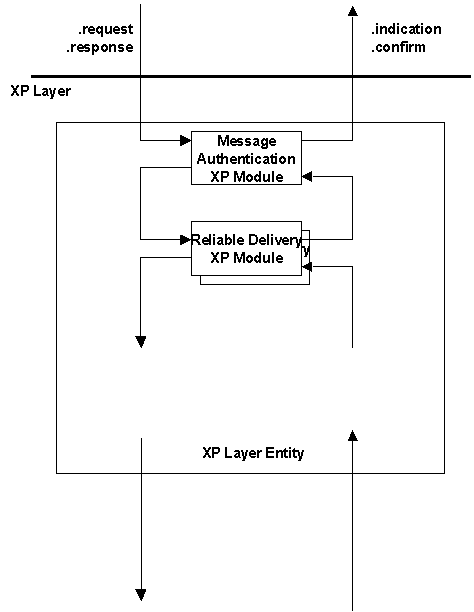
Figure 5.1 XP Layer Entity Processing
The XP modules shown in figure 4.1 are purely illustrative. The
intent is to suggest that there may be some precedence order to the module
processing and that within a given precedence level ordering may insignificant -
ie. modules within a given precedence level are orthogonal.
Probably want to think about this a little more.
If we retain bestEffort semantics... ie. some modules put more effort in... but
there is still no guarantee of delivery, it is likely that there will be no
natural order for processing these modules. eg. should one authenticate a
message before processing say its reliable delivery headers. In a Byzantine
world I guess you would, because someone may be trying to force some mechanism
to misoperate.
5.2 Application Message
Processing
Application specific processing of an XP Message occurs within XP Processors (initiating, responding and intermediary). XP Messages are delivered to XP
clients in .indication and .confirm service primitives.
Application processing of an XP message may then give rise to the either a response, in the
case of an XP_Data.indication, or the generation of further
.request primitives as governed by the application protocol operating
between peer XP clients. Such application protocols are outside the scope of the
XP activity.
I have retained the term 'XP Message' here although I am
strongly tempted to change it to Application Message - although I would like a
better term than that - XP Payload might be better - other thoughts and
comments?
In the case of intermediary XP processors, the response returned toward the
initiator may be dependent on the outcome of processing at downstream XP
Processors and at the responding client.
The diagram below illustrates the components of an XP client within this
abstract model:
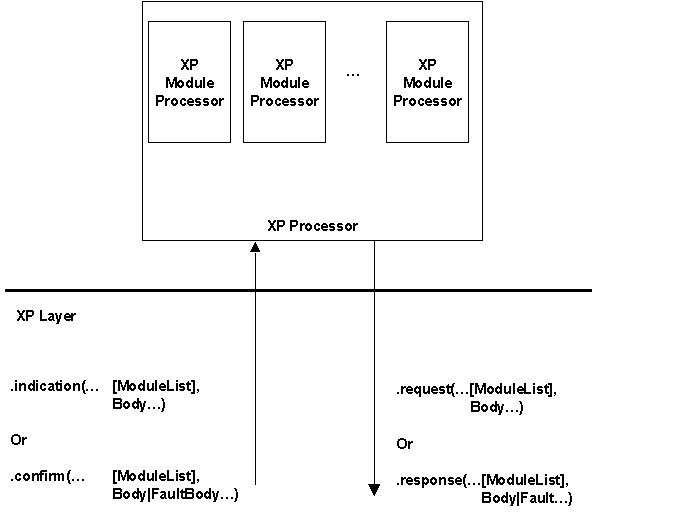
Figure 5.2 Model of XP Message
Application Processing
The XP Processor is the principle application component. It is responsible for the application specific processing of XP messages
in accordance with the intended application semantics of the message body,
attachments and any optionally included module blocks. The processing of XP
module blocks in accordance with the rules of procedure associated with a
particular XP module is handed off to a module specific XP Module
Processors.
The model of the interface between XP Module processors and an XP Processor
is deliberately vague. From an XP module specifcation point-of-view, the
important thing to specify with respect to an XP module are:
-
the
syntax and semantics of the associated XP module blocks
-
the
rules of procedure with respect to the generation of XP module blocks either in
response to the receipt of an XP module block in an inbound message or at an
initiating XP client.
[We will need to decide whether the order of module processing
is semantically significant. We should have an architectural rule about this. It
is probably easier and safer to assert that module processing order is
semantically significant and that it is determined by the order in which module
blocks arise in XP messages. XP clients initiating the transfer of an XP message
may exert an influence of the module processing order by: targetting module
blocks at specific intermediaries; by controlling the ordering of module blocks
within the message]
6. Layer Entities and Protocol Bindings
Bearing in mind that this is an abstract model, one of the principal roles
for an XP layer entity is to provide an abstraction for a binding to an
underlying protocol. In this context it is a container for the abstract rules
that combine parameters taken from .indication and .response
primitives (abstract) to form the outbound message and headers for the
underlying protocol and vice-versa in the case of inbound messages and the
.indication and .confirm primitives.
[I'd like to do a more detailed treatment of the SOAP HTTP
bindings to show how using this form of model it become a non-issue whether the
URI of the intended recipient is carried within the SOAP envelope or whether it
is carried within the HTTP headers – the binding will dictated the mapping
between underlying protocol headers, underlying protocol payload and XP service
parameters. Likewise the derivation of the SOAPAction header can be explained.
Also, the treatment of attachments would also be useful. I believe that we have
to define a default way to carry binary attachments within the XP message
envelope – possibly base64 and/or an escape mechanism for XML/text. Thus the
support for attachments becomes intrinsic, however the use of more efficient
underlying mechanisms for direct handling of binary become part of the binding.
I'd also suggest that the construction of manifest, concrete attachment URIs and
concrete attachment references be undertaken by the binding (or at least exposed
for manipulation by the binding)].
7. Modelling SOAP
[This section at present is just a place holder – I'd like to do
a much more thorough job]
8. References
[1] "Simple Object
Access Protocol (SOAP) v1.1"
[2] "Axis
Architecture Overview"
http://www.soap-wrc.com/axis/axis_arch_overview_v03.zip








